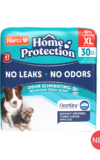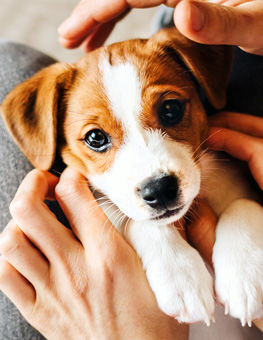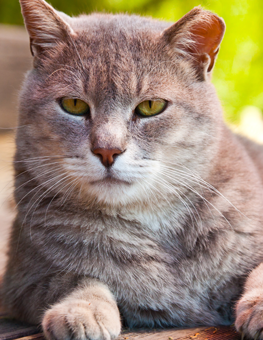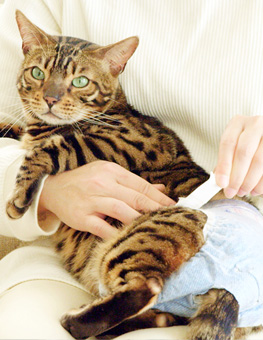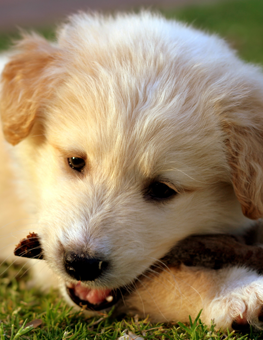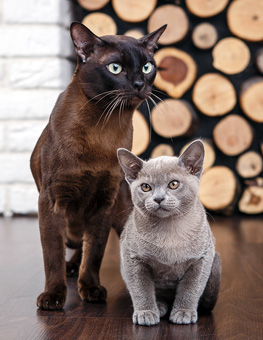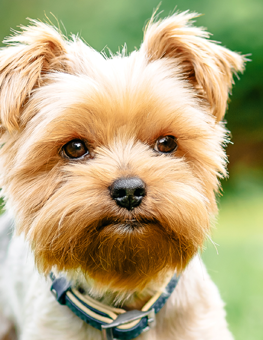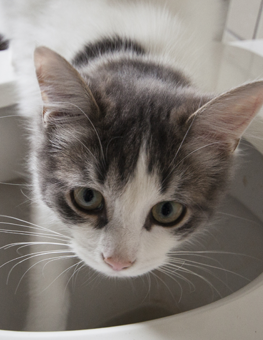After Spay Care for Your Pet
You did it! Congratulations on deciding to spay (or sterilize) your female pet! Learn how to make her recovery easier.
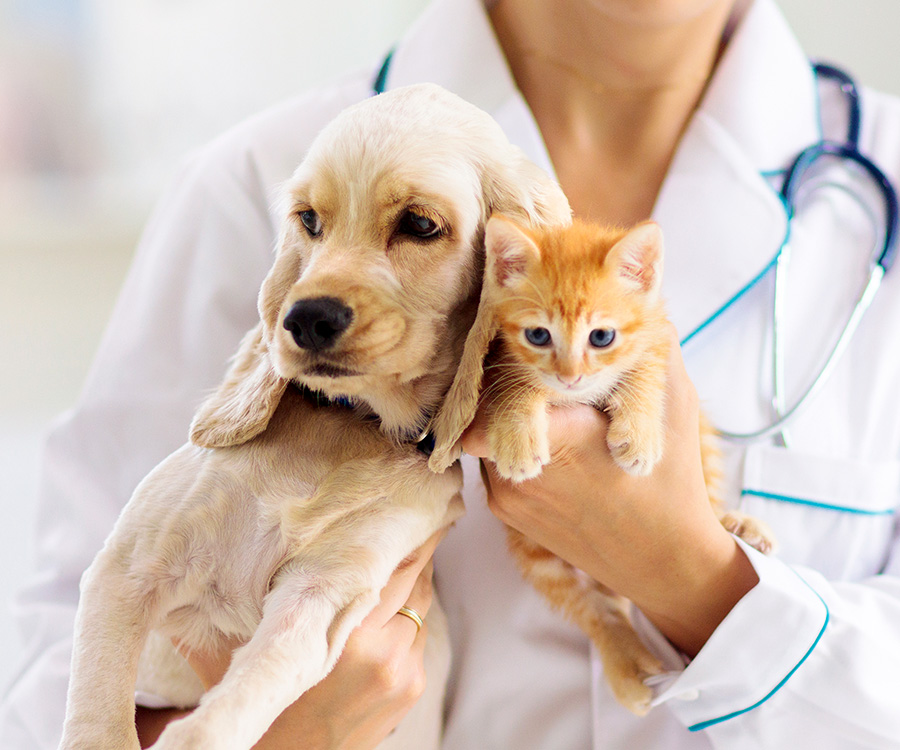
Listen to the advice of your vet, as a spay is a serious, although quick surgical procedure.
You are doing important work by preventing unwanted animals that can wind up in shelters as well as some particularly scary conditions that can affect un-spayed female pets.
What can you do to make recovery for your sweet girl quick and easy? First and most importantly, listen to the advice of your Veterinarian. A spay is a serious abdominal surgery and although they are usually quick procedures, your pet does need to take some time to recuperate.
Care After Spaying
- Ensure your little girl is warm and dry, no baths or soaking of the incision until after any stitches are dissolved or removed.
- Give any and all medications dispensed as directed. This usually includes a pain medication and/or an antibiotic.
- For very active pets, a period of confinement may be necessary, either into a small room such as a kitchen with nothing that your pet can jump up and down off, like furniture.
- You can also consider a playpen for smaller pets, as long as they are not going to attempt to jump over the panels or gate. In this area, you may need to use a dog pad for her to have comfortable urinations especially if she is not completely housebroken.
- Do not let your pet outdoors unattended while they are healing. Complete healing from a spay procedure takes about 14 days.
How to Pick Up Your Pet After Spaying
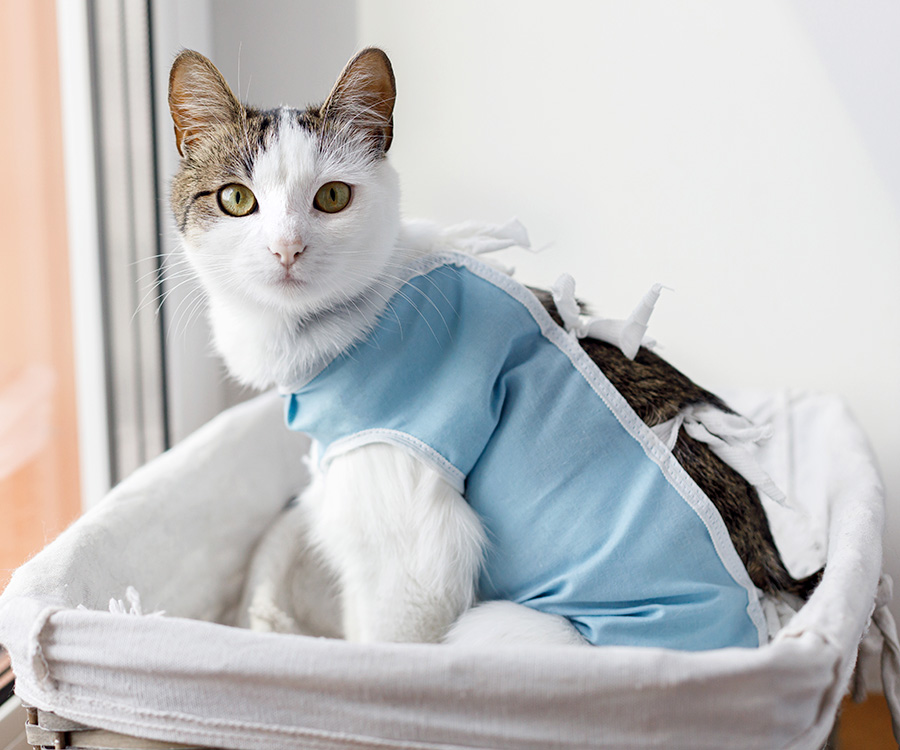
A body suit can be used to prevent your kitty from licking, biting or chewing at the incision site.
- When it comes time for snuggles and you want to pick your pet up, it’s best to use what we call the “scoop” method. This entails putting one arm around their chest and another under their rump so that there is little to no pressure on or stretching of the incision.
- Some pets may have external sutures (or stitches) and others may have absorbable sutures. Either way, do not allow her to lick, bite or chew at the incision site as this can cause infection. To prevent this, your pet may be sent home with an Elizabethan Collar (E-collar) or “the lamp shade” to prevent licking. Alternatively, you can use a body suit or recovery suit to cover the area safely.
Recovery After Spaying
- Be sure to check the incision daily in the beginning to monitor any redness, bruising or discharge. If you see something that looks concerning, call your veterinarian right away. Most pets recover very well from a spay and act normally within 2 to 3 days, some pets may take a little longer to bounce back.
- Usually the first 24 hours at home are the most stressful because your little girl is still recovering from anesthesia. This can make her act confused, sluggish and lacking an appetite. Most pets skip a bowel movement after anesthesia because they arrived at the hospital “fasted” or having skipped breakfast and anesthesia slows down the gastrointestinal tract which delays transit time in the intestines. It usually takes a few days for this to normalize.
- Cats usually are quick to bounce back after spaying and may not change their behavior much at all. One of the most common changes seen in felines after a spay is increased friendliness as a side effect of medications used for the surgery!
- Some cats may gain weight due to the decrease in metabolic requirements after spaying. Additionally, she may have a more pronounced primordial pouch which is normal and does not pose any health concerns.
- Cats should be spayed (especially if they are indoor-outdoor) as they can have kittens very easily.
- Cats, more often than not, will have buried absorbable sutures to prevent infection. However, this still means that they need to wear their E-collar or body suit to protect the incision site.
- For recovery, cats can be kept in a small quiet room with a litter box and food.
-
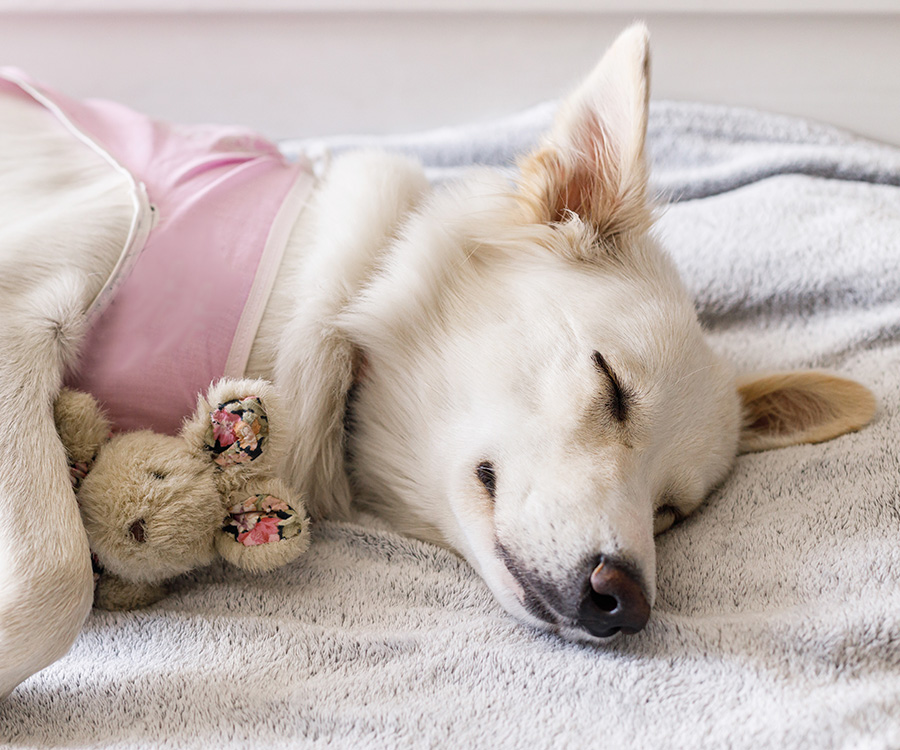
Recovering from the anesthesia can leave your pup sluggish and lacking an appetite for a few days.
The majority of animals do not have any changes to their personalities after the spay procedure, but do look out for signs of aggression, sensitivity or fear in the first 48 hours or so. This largely indicates pain secondary to the surgery (which is expected) so make sure they are getting medication for pain management. This temporary state of discomfort will not last long. Most pets wake up the day after surgery feeling much better.
- Check on her often especially during the first 48 hours. As she improves and is more willing to move around and play, she can go back to roaming the house as usual. Sutures that need to be removed require more attention and monitoring.
Speak with your veterinarian for extra tips and tricks about recovery.



